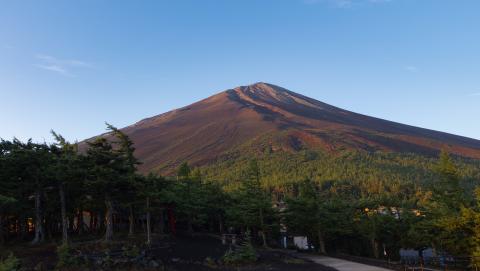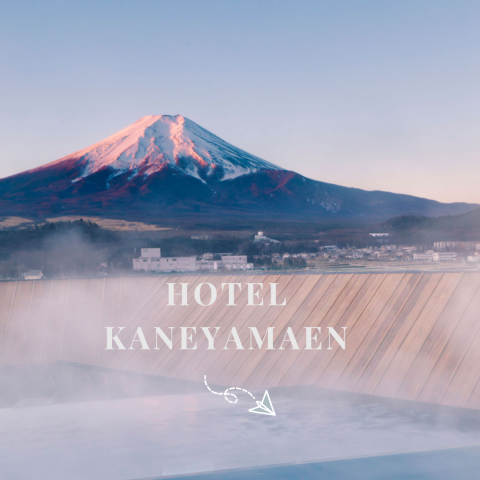Main content starts here.
The Last Master of Ukiyo-e Actor Portraits, Natori Shunsen
The Minami Alps Art Museum was built to spread the works of Minami Alps native, Natori Shunsen. It is said that he was the last master of Ukiyo-e (woodblock print) actor portraits. This museum houses over 1,800 pieces of his work, as well as research materials he used. The works of a “Shin-hanga” artist who was active around the same time are also on display.

▲Minami Alps Art Museum (Minami Alps City)
Groundbreaking Japanese Art: Ukiyo-e
In 1999, the American Magazine LIFE published a list of the top 100 people who left behind the most important achievements in the last 1,000 years. This list included many important figures, including Thomas Edison, Christopher Columbus, Galileo Galilei, Leonardo da Vinci, William Shakespeare, Napoléon Bonaparte, and other well-known historical figures. Among these figures, only one was Japanese, and that person was Katsushika Hokusai.
Ukiyo-e or woodblock print art style had left an immense impression on many contemporary European artists, and it even started a movement within the European art world called “Japonisme.” Many believe that in post-impressionism, there was not a single European artist who had not taken influence from Ukiyo-e in some form or another. This goes to show the impact of Ukiyo-e, and how it had destroyed preconceptions of many European artists. For them, it was a new, fresh breath of air.

▲”The Great Wave of Kanagawa” (Katsushika Hokusai, Thirty-Six Views of Mt. Fuji)
Big names such as Van Gogh, Monet, Manet, and Cézanne had all famously taken influence from Ukiyo-e, however, it is said Van Gogh was the most prolific lover of them all. Van Gogh owned thousands of Ukiyo-e paintings. Behind the central figure in his “Portrait of Père Tanguy,” you can see countless, different Ukiyo-e portraits. Ukiyo-e greatly influenced many of Van Gogh’s works, and he himself had a great adoration for Japan.

▲”Portrait of Père Tanguy” (Vincent Van Gogh)
Center of the Ukiyo-e World: Actor Portraits
Ukiyo-e was a highly-valued art form within the West, but back in Japan, opinions varied. As opposed to art, Ukiyo-e was seen as simple flyers and posters. With the exception of Ukiyo-e landscape paintings like those of Hokusai, most depicted scenes from Kabuki plays and popular actors of the time, called “Yakusha-e” (or “actor portraits” in English).

▲"Beauty Portrait" (Utamaro)

▲"Actor Portrait" (Sharaku)
Kabuki was a form of entertainment for the masses, especially in the Edo period (1603-1868). The Ukiyo-e that depicted these Kabuki stars were equivalent to that of celebrity posters.
However, in Meiji Year 29 (1896) photography technology entered Japan and overtook the role of Ukiyo-e, and by Year 30 (1897), the Ukiyo-e became irrelevant after a long success stretching that stretched over two whole centuries.
The Last of Ukiyo-e: “Shin-hanga”
Shin-hanga was a new style of woodblock print art, beginning from the Taisho period (1912-1926) into the Showa period (1927-1989). Its goal was to revive the Ukiyo-e art style. Unlike its predecessor, Shin-hanga was not confined to just media prints like actor portraits; it challenged many pieces of work with its modern techniques.
Overseas, Shin-hanga was praised for reviving Ukiyo-e, and it was said to have garnered the most attention in the United States. Shin-hanga pieces carried a high sense of realism, making it hard to imagine that it came from a woodblock print. Its brilliant colors and hues were easily mistaken for watercolors.

▲"Meguro Fudo Temple" (Kawase Hasui)

▲"Michitose" (Itou Shinsui)
Well-known figures such as Douglass McArthur, and neurologist Sigmund Freud, along with more modern figures such as Steve Jobs and Diana the Princess of Wales were all well-known Shin-hanga enthusiasts. Shin-hanga, known as the last of Ukiyo-e, was an art style that managed to both revive Japan’s traditional Ukiyo-e all while gaining a high level of respect in the West.
The Work of Natori Shunsen
Natori Shunsen was born in Meiji Year 19 (1886) in the Akiho District of Yamanashi (modern-day Minami Alps City). When he was young, his family’s business fell into ruin and they decided to pack up and move to Tokyo. Life in Tokyo made Natori’s appreciation for art grow exponentially. From early childhood, he enjoyed drawing pictures, and by his teens, he began exhibiting sure signs of an artistic genius. During his life as an Ukiyo-e artist, he drew actor portraits or “yakusha-e,” and traditional Japanese style paintings known as “nihon-ga.” His outstanding talent has been highly praised by researchers in recent years. Furthermore, he was also a writer who had published many stories.
Koka Yamamura was another Ukiyo-e artist of the time, famous for the entertaining and bright expressions depicted in his Yakusha-e. Natori, on the other hand, added a more orthodox and realistic touch to his works, and those who viewed his works praised this level of depth.


▲Works by Natori Shunsen
At the Minami Alps Art Museum, Shin-hanga exhibitions are held, and there is a permanent exhibition corner with Natori’s works on display.
Recently, there has been a Shin-hanga boom in many Western countries, especially in the United States. The Japanese Ukiyo-e has historically inspired so many contemporary European artists, and we hope this traditional art form continues to inspire an even wider audience across the globe.
More Info
Minami Alps Art Museum website:
https://www.minamialps-museum.jp
Address: 1281 Ogasahara, Minami-Alps, Yamanashi
Published on
- April 14, 2022
Share
-

Fuji Subaru Line 5th Station & Mt. Fuji Travel Guide
March 3, 2025
Home of Mt. Fuji > Staff Journal > Minami Alps Art Museum

